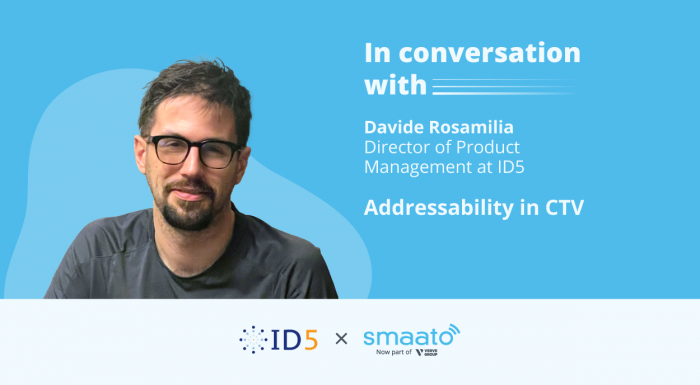
Meet Our OTT Advertising Platform
Welcome to our Blog Series! We’re excited to share more information with you about a particular facet of our holistic omnichannel OTT advertising platform. This week, we’re revisiting ad podding. Why?
While we’ve covered ad podding before, we wanted to take a moment to talk through why ad podding matters, and how ad podding can help save advertisers money while helping publishers better monetize their inventory and improve their viewer experience.
Breaking Down Barriers to OTT Advertising with Ad Pods
We’ve been talking about OTT and CTV for a while now, and it’s no wonder. This channel offers an incredible opportunity for publishers to efficiently monetize their inventory. As you know, the growth is explosive.
Ad spending on over-the-top (OTT) TV is expected to continue its meteoric growth into 2023. Advertisers are keeping pace with consumer viewing habits. The OTT space can help them capitalize on new opportunities in addressability. At the same time, the OTT ad space is maturing from an ad delivery technology standpoint. This enables advertisers to better integrate OTT into their holistic omnichannel strategies. This gives publishers a scaleable channel for monetization, with lots of room to grow. In this way, the concept of ad podding is an important facet of the growing OTT opportunity.
Let’s take a closer look at the basics – and benefits – of ad podding, as well as what marketers and publishers need to know as we move further into 2022.
Refresher: What Are Ad Pods?
Simply put, an ad pod is a commercial break in the OTT world. Ad podding creates groups of ads that are played back-to-back, just like you see in the traditional linear TV world. Within each ad pod, you have multiple ad slots. These slots can also provide contextual data for marketers. In turn, they can increase ad relevance. The concept may sound simple enough. But, it’s important to understand the difference between ad pods and slots in evaluating how OTT inventory can be auctioned.


At present, there are two ways that publishers can present ad pods for bidding: by pod or by slot. With a per-pod model, marketers are exposed to the entire ad pod and the slots within it. They can bid on more than one slot in an ad pod (though, with creative deduplication in place, no more than one will run in the same pod). With per-slot bidding, on the other hand, marketers see each slot as a separate request, which means they can bid on any or all of them.
This difference might seem subtle. But from the standpoint of marketers – and, importantly, viewers – the distinction is an important one.
How do Ad Pods Benefit Publishers?
For publishers, ad podding is a no brainer. Why? Ad pods let publishers make the most out of a given commercial break. Instead of filling a break with a single ad, publishers can use each commercial break as an opportunity to sell several ad slots. Different marketers, advertisers, or DSPs can fill each slot. As a result, the value of each ad pod increases by 2, 3, or even 5 times.
Not only that, but we find that marketers are willing to spend more on podded inventory. In fact, on the Smaato platform, this can mean eCPMs that are more than 300% higher than non-podded inventory.
Some platforms (like ours) make it really easy to ensure the best-possible viewer experience. For example, our platform has built in controls to prevent viewers from seeing the same ad multiple times in a pod. We also offer limitations on IAB categories per pod. Why? These limitations prevent competing ads from running side by side. Controls like these protect the viewer experience, and help marketers, too. As a result, they can help command more of a premium.

“On the Smaato platform eCPMs can be 300% higher for podded inventory than non-podded inventory.”
How do Ad Pods Benefit Marketers?
As mentioned, per-pod bidding means that marketers get to see the whole pod in the bid request. Why is this important? Simply put, it gives marketers more transparency. They get more control over ad placement within the pod. For example, an advertiser could choose to only bid on the first slot in the pod, to ensure their ad airs first.
Ad pods also give marketers the opportunity to bid on more than one slot per pod. Of course, this helps drive demand for publishers. But it also gives marketers a better chance to get their creative in the pod. In other words, per-pod bidding means better monetization opportunities for publishers and greater bidding efficiency for marketers. It offers a mutually beneficial scenario that moves OTT advertising toward a more sustainable future.
But that’s not all. Among the many advantages ad podding offers to marketers, these might be the most important:
- Creative deduplication: The same ad won’t run more than once during an ad pod. A chief complaint among OTT viewers today is ad repetition. When an audience sits through the same ad over and over again, it hurts their perception of a given brand. Creative deduplication offers a simple solution to this common pain point.
- Competitor separation: Ads from the same IAB category won’t run in the same pod. When ads in the same product category run together, it dilutes the message for everyone in the pod. That’s where competitor separation comes in. From the viewer standpoint, this keeps ad breaks more interesting. For the advertisers, it ensures messaging and differentiation remain powerful.
- Audience relevance: Ads that relate to your viewers. With ad pods filled using server-side ad insertion, ads are stitched into video-on-demand content. Since specific ads can be stitched into specific content, it’s easy to assess the right context for a brand’s message. This creates better relevance and experiences for advertisers and viewers alike.
At Smaato, we offer all this and more on our extensive OTT and CTV platform.

“Per-pod bidding means better monetization opportunities for publishers and greater bidding efficiency for marketers.”
Conclusion
Ad podding brings structure and insights to inform marketers’ CTV buying strategies. It represents an important move toward simulating a live TV ad experience for programmatic buyers. Furthermore, ad podding comes with additional contextual targeting opportunities, while also offering greater opportunities to appear in a given ad break.
In conclusion, ad podding represents one of the media industry’s highly coveted win-win-win scenarios. How? Ad podding grants:
-
1. Greater monetization opportunities for publishers
-
2. More transparency and control to marketers
-
3. Better experiences to viewers
As such, expect to see ad podding become the dominant means of bidding on OTT inventory in the future.
So, are you ready to learn more about Ad Podding?





